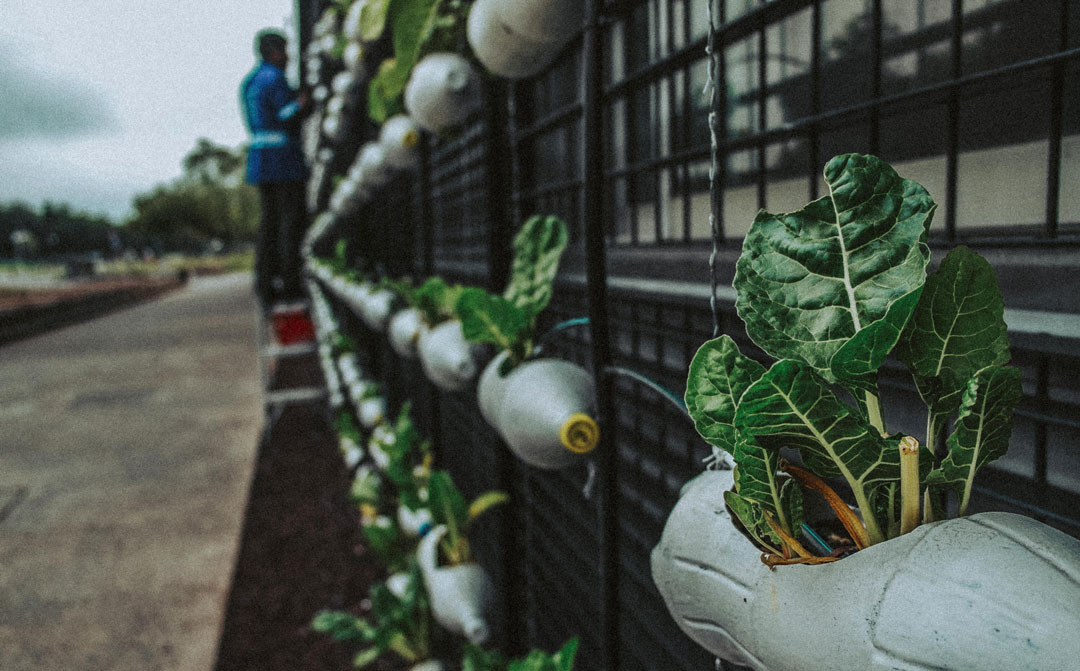The United Nations 2030 Agenda for Sustainable Development was adopted by all United Nation (UN) Member States in 2015, to achieve a better and more sustainable future for the world. The 17 Sustainable Development Goals (SDGs) that they outlined, are the global partnership blueprint to address global challenges such as poverty, inequality, climate change, environmental degradation, peace and justice. The idea is that these goals, once fulfilled, will lead to peace and prosperity for people and the planet, now and into the future. Smart Cities focus on the betterment of people’s lives through technology, so in developing these cities, it is natural for the UNs SDGs to be met along the way.
Applying solutions in the AgTech (agricultural technology) sector to smart cities contributes to SDGs 1, 2, 13, 14 and 15 that relate to Poverty, Hunger, Climate Action, Life Below Water and Life on Land respectively. Encompassing this broad range of goals, AgTech aims to address increasing concerns about the increasing global population by applying technology and software to the diminishing viability of farming. AgTech will assist in monitoring crops, livestock, pollinators, and water and energy use. This enables the sector to reduce reliance on pesticides and other methods of disease and pest control that are known to be harmful to ecosystems and biodiversity, enables reduced resource usage and reduces cost.
One example of an AgTech company in the UK is LettUs Grow, a Bristol-based startup that designs irrigation and controls aeroponic technology for indoor vertical and glasshouse farms. This approach uses 95% less water than typical farming methods, so could prove especially useful when applied to countries that suffer drought such as Africa.
Founded in 2012, Warwickshire-based startup Rootwave has developed a handheld device called RootWave which zaps weeds with an electric pulse that ‘boils’ the plant from the root upwards. Aimed at small scale farmers and gardeners, the solution removes the threat of dangerous chemicals to the ecosystem whilst also addressing the issue of herbicide resistance in weed populations. They are currently making progress in integrating and automating the product into larger machines designed for large-scale agriculture. Reducing the amount of herbicides, as well as pesticides, will be hugely beneficial for Life Below Water and Life on Land.
Meanwhile, at the University of Strathclyde, a spinout company called 3F Bio has developed a method to convert waste plant starch into edible mycoprotein – the protein found in Quorn. Converting large amounts of agricultural waste into food is a much more efficient and sustainable way of producing protein if you compare it to the typical rearing of livestock for protein. If this technology became widespread it could reduce the need for livestock rearing and reduce the phenomenal amount of greenhouse gases produced by animal husbandry, linking it to SDG 13, Climate Action.
With uncertainty over food trade after Brexit, it has become more important than ever for the UK to become self-sufficient while keeping food at an affordable price. Any technology that improves British agriculture and helps the UK become even more self-sufficient is surely beneficial to the country, and globally where the technology can surely also be applied. Third world countries that suffer from poverty and hunger will surely also benefit from technologies that increase yield and allow the utilisation of land that without these technologies may not have had a large crop yield. Introducing technology into local farming will also improve the local economy and reduce transport costs and carbon emissions.
100 feet below Clapham High Street tube station in London, lies Growing Underground, the world’s first underground farm. Although a novel concept, this method has multiple benefits over standard farming. Being underground means the temperature is at a constant therefore doesn’t require heating as in greenhouses above ground, as well as not being affected by the changing seasons above ground. It also uses a vertical hydroponic system which uses 70% less water than regular methods. Electricity is major overhead but with more renewable energy coming in will be less bad. Currently supplying herbs and salads to Marks & Spencer, Waitrose, Ocado, Whole Foods and Planet Organic, as well as restaurateurs including Michel Roux, this concept if applied to other smart cities around the world could reduce the need to import some crops and drastically reduce the food miles these crops would usually travel from farm to plate. Growing Underground claims to be able to harvest its crops up to 60 times a year which could be increasingly useful If implemented in countries with drastic seasons that usually import a lot of food.
References:
https://sustainabledevelopment.un.org/
https://www.lettusgrow.com/
http://rootwave.com/
http://www.3fbio.com/
http://growing-underground.com/

Recent Comments